Geological hazards refer to natural phenomena that pose a threat to human life, property, and the environment. These hazards are primarily caused by the movement and interaction of the Earth’s tectonic plates. The Earth’s crust is divided into several large plates that float on the semi-fluid asthenosphere beneath them. When these plates collide, separate, or slide past each other, it can result in the formation of various geological hazards.
1-Earthquakes

Earthquakes are natural disasters that result from the sudden release of energy in the Earth’s crust. Seismic activity refers to the occurrence of earthquakes, which can be caused by various factors such as tectonic plate movements, volcanic activity, or human-induced factors like mining or reservoir-induced seismicity. The intensity of an earthquake is influenced by factors such as the magnitude of the earthquake, the distance from the epicenter, and the type of soil. To mitigate earthquake damage, various measures can be taken, including building earthquake-resistant structures, implementing early warning systems, and educating communities on preparedness and response strategies.
How Earthquakes Are Formed
Earthquakes are formed due to the release of energy in the Earth’s crust. The Earth’s crust is divided into several tectonic plates, which are in constant motion. When these plates collide, slide past each other, or even separate, stress and strain build up along their boundaries. Eventually, this stress becomes too great, causing the rocks to rupture and release energy in the form of seismic waves. These waves then propagate through the Earth, resulting in ground shaking.
Subduction zones, where one tectonic plate is forced beneath another, are common locations for earthquakes.
Factors that Influence Earthquake Intensity
The intensity of an earthquake is determined by various factors that contribute to the severity of the ground shaking. One of the primary factors is the magnitude of the earthquake, which measures the amount of energy released at the source. Generally, larger magnitude earthquakes result in more intense shaking and can cause greater damage to infrastructure. Additionally, the distance from the epicenter plays a crucial role in determining the intensity. As seismic waves travel outward from the source, their strength diminishes, resulting in less intense shaking further away. Moreover, the geological characteristics of the region also influence earthquake intensity. Soft soil and sediment amplify seismic waves, leading to stronger shaking, while hard rock tends to attenuate the waves.
How to Mitigate Earthquake Damage
Earthquakes can cause widespread devastation and loss of life. However, there are ways to mitigate the damage caused by these natural disasters. One effective method is building codes. By constructing buildings and infrastructure designed to withstand seismic activity, the impact of earthquakes can be greatly reduced. For example, in Japan, a country prone to earthquakes, buildings are constructed with flexible materials and reinforced structures to withstand ground shaking. Another strategy is land-use planning. The potential loss of life and damage can be minimized by avoiding the construction of critical facilities such as hospitals or schools in high-risk areas. Additionally, early warning systems can provide valuable seconds or minutes for people to take cover or evacuate.
2- Volcanic Eruptions
Volcanic eruptions are natural phenomena that can have devastating consequences. Understanding what causes a volcano to erupt is crucial for predicting and preparing for these events. Magma, which is molten rock beneath the Earth’s surface, rises due to pressure and forms a volcano. Monitoring and predicting volcanic eruptions is essential for issuing early warnings and minimizing the impact. Volcanic hazards, such as lava flows, pyroclastic flows, and ashfalls, pose significant risks to human life and infrastructure. Preparing for a volcanic eruption involves developing evacuation plans, stockpiling emergency supplies, and educating communities.
What Causes a Volcano to Erupt
Volcanic eruptions, one of nature’s most awe-inspiring displays, can evoke a mix of emotions ranging from fear to fascination. Understanding the underlying causes behind these explosive events is crucial for mitigating their potential devastation. Volcanic eruptions occur when molten rock, known as magma, rises to the surface through a volcanic vent. The primary factor triggering an eruption is the build-up of pressure within the volcano’s magma chamber. This pressure can result from various factors, including the composition and viscosity of the magma, the presence of dissolved gases such as water vapor and carbon dioxide, and tectonic activity. Once the pressure exceeds the strength of the surrounding rocks, it leads to a volcanic eruption, releasing ash, gases, and lava.
How to Prepare for a Volcanic Eruption
In light of the devastating consequences that volcanic eruptions can have on communities and infrastructure, it is crucial to be well-prepared in order to mitigate the potential risks. Effective preparation before an eruption can significantly reduce the impact on human lives and property. The following measures can help individuals and communities prepare for a volcanic eruption:
- Emergency Kits: Assemble a well-stocked emergency kit that includes essentials such as food, water, medications, a flashlight, and a battery-powered radio.
- Evacuation Plan: Develop a detailed evacuation plan that outlines escape routes, designated meeting points, and emergency contacts.
- Stay Informed: Stay informed about the volcano’s activity through official sources such as the National Weather Service or local authorities. Listen to news and alerts on the radio, TV, or social media for updates on the situation.
- Protect Your Property: Take measures to protect your property from the effects of a volcanic eruption, such as covering vents, windows, and doors to prevent ash from entering your home. Also, move valuable items to a safe location and secure outdoor objects that could be damaged or become hazardous during an eruption.
- Know the Risks: Understand the potential risks associated with a volcanic eruption in your area, such as the possibility of lava flows, ash fall, or pyroclastic flows. This will help you make informed decisions about evacuation and other safety measures.
- Plan for Your Pets: Make sure to include your pets in your emergency plan and have a plan for their care and evacuation.
- Stay Calm: In the event of an eruption, stay calm and follow the instructions of local authorities. Evacuate immediately if directed to do so, and avoid areas downwind or downstream of the volcano.
Long-Term Effects of Volcanic Eruptions
The fascinating world of volcanic eruptions continues to captivate us with its power and beauty. However, it is important to understand the long-term effects that these eruptions can have on the environment and human populations. Volcanic eruptions can cause significant damage to surrounding ecosystems, altering landscapes and disrupting ecological balance. The release of large amounts of ash and gases can result in poor air quality, posing health risks to both humans and animals. In addition, volcanic ash can contaminate water sources and affect agriculture, leading to food shortages and economic instability. Furthermore, volcanic eruptions can contribute to the formation of new land, creating opportunities for the development of unique ecosystems. Understanding the long-term effects of volcanic eruptions is crucial for the mitigation and management of their impacts on both natural and human systems.
3-Tsunamis

Tsunamis are powerful natural disasters that can cause catastrophic damage. Understanding the causes, effects, and strategies for mitigating tsunami damage is crucial for the safety and well-being of coastal communities. Submarine landslides and coastal earthquakes are common triggers for tsunamis. These events can displace large amounts of water, resulting in the formation of massive waves. The effects of a tsunami can be devastating, including widespread flooding, destruction of infrastructure, and loss of human lives. To mitigate tsunami damage, various strategies are employed, such as early warning systems, coastal defenses, and community education and preparedness programs.
What Causes a Tsunami
Volcanic eruptions can be devastating, but they are not the only natural disasters that pose a threat to coastal regions. Another significant natural disaster that can result in massive destruction is a tsunami. Tsunamis are triggered by a variety of factors, but the most common cause is an underwater earthquake. When an earthquake occurs beneath the ocean floor, it can displace a large volume of water, creating powerful waves that can travel at high speeds across the ocean. Other causes of tsunamis include submarine landslides and coastal earthquakes. In some cases, volcanic activity can also generate tsunamis. Regardless of the cause, the result is a devastating force that can cause widespread damage and loss of life.
The Effects of a Tsunami
Volcanic eruptions can trigger devastating tsunamis that can cause widespread destruction along coastal areas. These powerful waves can have a range of effects, with the severity depending on various factors such as the size of the eruption, the depth of the water, and the proximity of the coastline. One of the primary effects of a tsunami is the inundation of coastal areas, leading to the destruction of buildings, infrastructure, and vegetation. The force of the waves can also result in the displacement of large objects, such as boats and vehicles, causing further damage and loss of life. Additionally, tsunamis can cause long-lasting environmental impacts, including the erosion of beaches and the destruction of marine ecosystems.
Strategies for Mitigating Tsunami Damage
To better protect coastal communities from the devastating impact of tsunamis, it is crucial to develop effective strategies for mitigating tsunami damage. These strategies aim to reduce the loss of life, minimize property damage, and enhance the resilience of vulnerable areas. One key approach is early warning systems. By detecting seismic activity and oceanic disturbances, these systems can provide timely alerts to coastal populations, allowing them to evacuate to safer areas. Furthermore, coastal planning and land-use regulations are vital in mitigating tsunami damage. Implementing setback requirements and zoning restrictions can help prevent the construction of critical infrastructure and residential areas in high-risk zones.
4-Landslides
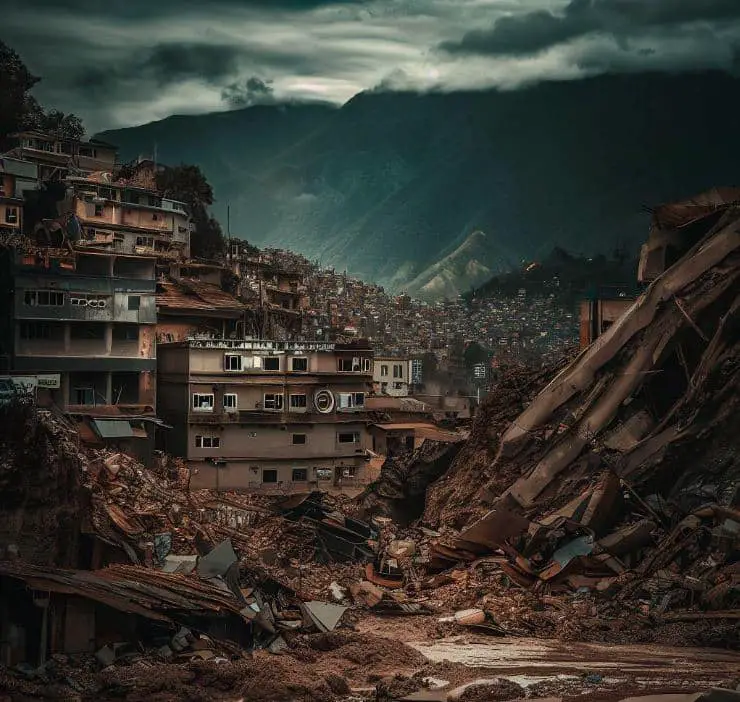
Landslides are a significant natural hazard that can cause extensive damage to infrastructure and pose a risk to human life. Causes of landslides can vary, including factors such as heavy rainfall, earthquakes, and human activities. Predicting and preventing landslides is crucial for minimizing their impact. Various techniques, such as slope stability analysis and monitoring systems, can help to anticipate and forecast landslides. Once landslides occur, mitigation strategies are employed to reduce their effects, including retaining walls, drainage systems, and reforestation. Understanding the causes, predicting and preventing landslides, and implementing mitigation strategies are all essential steps in managing this natural hazard.
Causes of Landslides
Landslides can be triggered by a variety of factors, both natural and human-induced. The main natural causes include geological factors, such as the presence of weak rocks or steep slopes, heavy rainfall or snowmelt leading to increased pore pressure, and seismic activity. Human activities, on the other hand, can significantly contribute to landslide occurrences.
Predicting and Preventing Landslides
To effectively predict and prevent landslides, it is crucial to understand the underlying causes and dynamics of these natural disasters. Landslides can occur due to various factors, including geological, environmental, and human-related factors. Geological causes include the composition and structure of the soil and rock, while environmental factors encompass rainfall patterns, slope steepness, and vegetation cover. Human activities such as deforestation, construction, and mining can also significantly contribute to landslide occurrences.
To mitigate the risks associated with landslides, several strategies can be employed. Early warning systems play a vital role in predicting imminent landslides and providing timely alerts to vulnerable communities. These systems rely on the monitoring of ground movement, rainfall patterns, and other relevant data.
Mitigation Strategies for Landslides
Landslides pose a significant threat to human life and infrastructure, making it crucial to develop effective mitigation strategies. One strategy is the implementation of early warning systems, which can provide timely alerts to at-risk communities. By monitoring rainfall patterns, ground movement, and other indicators, these systems can detect potential landslide conditions and issue warnings, allowing people to evacuate and take necessary precautions. Additionally, land-use planning plays a vital role in mitigating landslide risks. Identifying areas prone to landslides and implementing zoning regulations that restrict construction in these high-risk zones can help minimize the potential for damage.
5-Avalanches
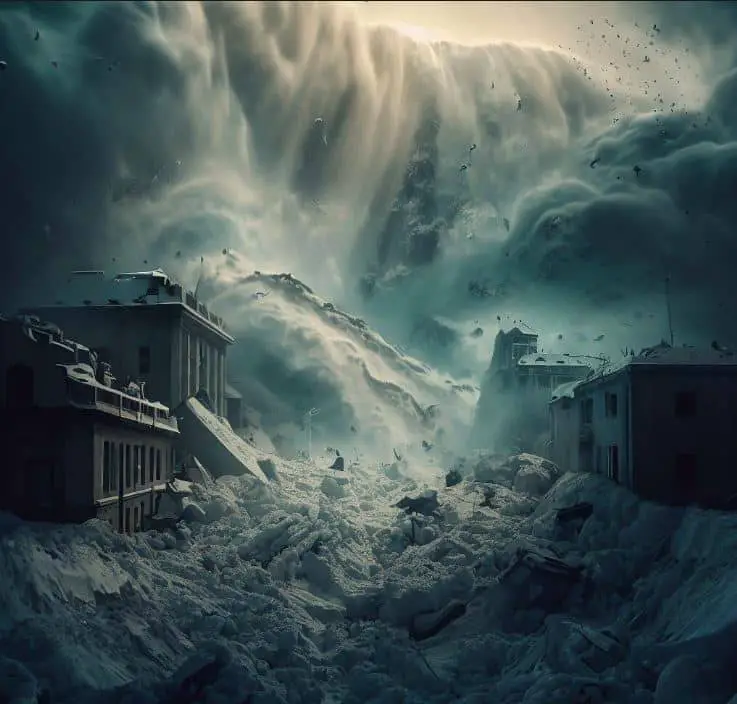
Avalanches are a natural phenomenon that can cause significant damage and loss of life. Understanding the common causes of avalanches is crucial for prevention and preparedness. Geological features and topography play a key role in determining avalanche risks, as steep slopes and loose snowpacks can increase the likelihood of a slide. Climate change also has an impact on snow stability, as rising temperatures can lead to unstable snowpacks. To mitigate the effects of avalanches, individuals, and communities can take steps to prepare, such as receiving proper training, carrying necessary equipment, and staying informed of avalanche warnings.
Common Causes of Avalanches
To fully understand the causes of avalanches, it is important to recognize the diverse range of factors that contribute to their occurrence. Steep slopes are the primary catalyst for avalanches, as they allow for the accumulation of snow and ice on unstable terrain. Additionally, heavy snowfall can overload the slopes, leading to an increased likelihood of an avalanche. Other contributing factors include temperature fluctuations, which can weaken the snowpack and make it more susceptible to sliding. Wind patterns also play a significant role, as they can transport snow onto certain slopes and create unstable conditions. It is essential to acknowledge that multiple factors often interact, increasing the complexity of predicting avalanches. By understanding these common causes, researchers and professionals can better identify and mitigate the risks associated with avalanches.
Preparing for an Avalanche
To effectively prepare for an avalanche, it is crucial to understand the common causes that trigger these natural disasters. Avalanches are often triggered by various factors, including heavy snowfall, steep slopes, and weak snow layers. Additionally, other triggers such as human activities, such as skiing or snowboarding, can also contribute to avalanche occurrences. To mitigate the potential risks, individuals and communities should prioritize avalanche education and awareness. This includes attending avalanche safety courses, regularly checking avalanche forecasts, and familiarizing oneself with the signs of unstable snowpack. Furthermore, proper equipment such as avalanche transceivers, probes, and shovels should be readily available. By taking these proactive measures, individuals can increase their chances of survival and minimize the impact of avalanches.
Mitigating the Effects of an Avalanche
To effectively mitigate the devastating effects of an avalanche, various strategies, and measures can be implemented. One crucial approach is the installation of protective structures such as snow fences and barriers. These physical barriers are designed to reduce the accumulation of snow, preventing it from reaching critical levels that could trigger an avalanche. Additionally, vegetation management plays a significant role in mitigating the impact of avalanches. By promoting the growth of dense forests or planting trees, the stability of slopes can be improved, reducing the likelihood of avalanches. Another effective strategy involves the use of early warning systems, which rely on advanced technologies to detect and predict potential avalanches. These systems provide valuable time for people to evacuate and take necessary precautions.
6-Floods

Floods can occur due to a variety of factors. Urbanization often plays a significant role, as the increase in impermeable surfaces such as roads and buildings reduces the ability of the land to absorb water. Deforestation can also exacerbate flooding, as trees help absorb water and stabilize the soil. Identifying and managing flood risks is crucial to mitigating their impact. This involves analyzing topography, rainfall patterns, and historical flood data. Flood mitigation solutions encompass a range of strategies such as creating floodplains, constructing levees and dams, and implementing early warning systems.
What Causes a Flood
Floods are natural disasters that can cause significant damage to both human lives and infrastructure. Understanding the causes of floods is crucial in order to develop effective strategies for flood management and mitigation. There are several factors that contribute to the occurrence of floods. One of the primary causes is excessive rainfall or precipitation, especially during periods of prolonged or intense storms. When the amount of rainfall exceeds the soil’s capacity to absorb it, the excess water runs off into rivers and streams, leading to their overflow. Another significant factor is the topography of the land, as areas with low-lying or flat terrain are more prone to flooding.
Identifying and Managing Flood Risks
To fully understand the impact of floods, it is crucial to identify and manage the associated risks. Identifying and managing flood risks requires a comprehensive approach that takes into account various factors. One of the key factors to consider is urbanization. As cities continue to expand, the amount of impermeable surfaces, such as concrete and asphalt, increases. This leads to greater surface runoff and a higher risk of flooding. Deforestation is another significant factor contributing to flood risks. When forests are cleared, the natural ability of trees and vegetation to absorb and retain rainfall is lost, resulting in increased runoff and erosion. Managing flood risks involves mapping flood-prone areas, implementing early warning systems, and establishing effective floodplain zoning regulations.
Flood Mitigation Solutions
To effectively manage and mitigate the risks associated with floods, various flood mitigation solutions have been developed. These solutions aim to minimize the impact of flooding events and protect both human lives and infrastructure. One important approach is the implementation of flood control structures, such as dams, levees, and floodwalls. These structures help regulate the flow of water, redirecting it away from vulnerable areas and reducing the risk of flooding. Additionally, floodplain zoning plays a crucial role in flood management. By restricting development in flood-prone areas, communities can reduce their exposure to flood risks. Furthermore, natural flood management techniques have gained attention in recent years.
7-Sinkholes
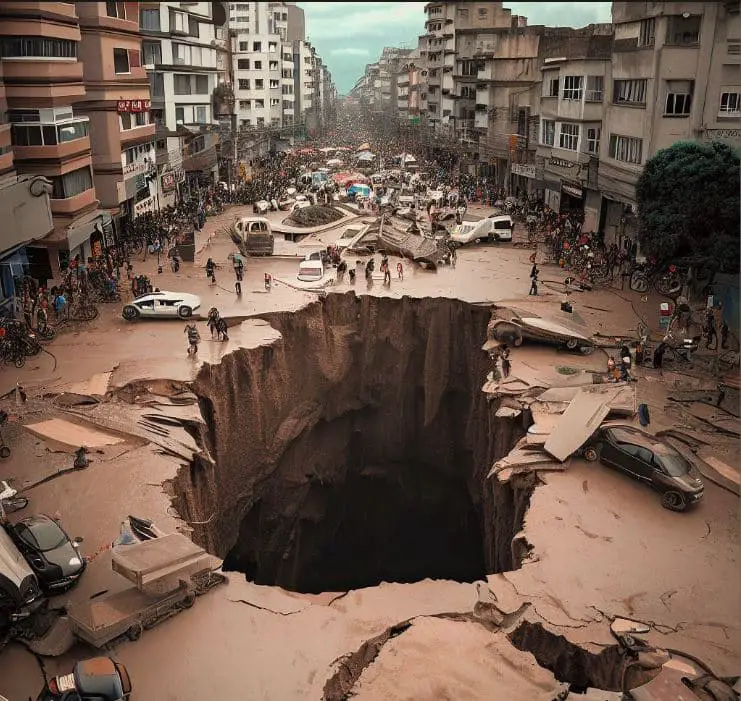
Sinkholes are a phenomenon that can occur naturally due to geological processes and natural factors. Geological processes such as the dissolution of rock or the collapse of underground caves can lead to the formation of sinkholes. Natural factors, such as heavy rainfall or changes in groundwater levels, can also contribute to sinkhole formation. Understanding the causes of sinkholes is crucial in mitigating sinkhole damage. This can involve implementing measures such as ground stabilization, proper construction techniques, and monitoring of groundwater levels. By understanding the various factors involved in sinkhole formation, scientists and engineers can work towards minimizing the impact of sinkholes on human settlements and infrastructure.
How Sinkholes Form
Sinkholes, also known as dolines or cenotes, are geological phenomena that evoke a sense of awe and wonder in their formation. These natural depressions in the Earth’s surface occur when underground rock layers, such as limestone or gypsum, dissolve over time due to the action of water. Water infiltration is the key process that triggers sinkhole formation. As rainwater or groundwater seeps into the ground, it dissolves the soluble rock beneath the surface, creating voids or cavities. Eventually, the weight of the overlying soil and rock becomes too much for the weakened ground to bear, leading to a sudden collapse and the formation of a sinkhole. Sinkholes can vary in size, from small depressions to large craters capable of swallowing entire buildings or roads.
The Causes of Sinkholes
Sinkholes are geological formations that a variety of factors can cause. One of the leading causes is the dissolution of soluble rocks, such as limestone or gypsum, which are susceptible to erosion by water. Over time, the water seeps into the rock and dissolves it, creating underground cavities. When the roof of these cavities collapses, a sinkhole is formed. This process is known as karstification.
Another cause of sinkholes is the withdrawal of groundwater. Excessive pumping of water from underground aquifers can lead to the destabilization of the ground above, causing sinkholes to form. This is a common occurrence in areas where there is excessive water extraction for agricultural or industrial purposes.
Mitigating Sinkhole Damage
To mitigate the damage caused by sinkholes, various strategies and techniques have been developed. One approach to minimizing sinkhole damage is through proper land-use planning and zoning regulations. By identifying areas with a higher risk of sinkhole formation, authorities can restrict or regulate certain activities that could exacerbate the problem. For example, prohibiting construction on areas prone to sinkholes or implementing stricter building codes can help prevent structural damage. Additionally, monitoring and early warning systems can be implemented to detect signs of ground instability, allowing for timely evacuation or intervention. Furthermore, geotechnical investigations and engineering solutions can be employed to stabilize the ground and prevent sinkhole formation. Techniques such as grouting, soil stabilization, and slope reinforcement can help reduce the potential for sinkhole development.
8-Mudslides
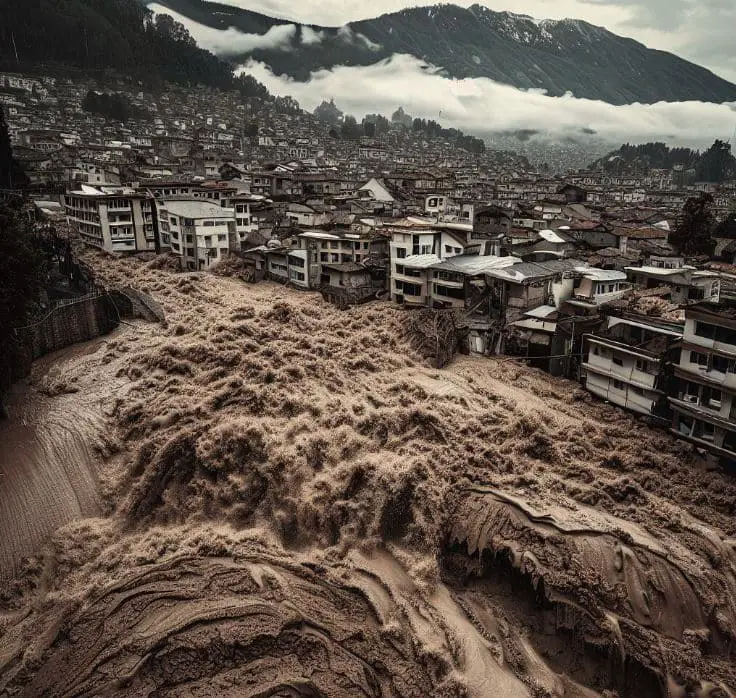
Mudslides are natural disasters that can cause significant damage to communities and infrastructure. Understanding the causes of mudslides is crucial in order to effectively identify and mitigate the risks associated with them. Human activities such as deforestation, construction, and mining can weaken soil stability and increase the likelihood of mudslides. Additionally, climate change plays a role, as it can lead to increased rainfall and more intense storms, which can trigger mudslides. Identifying areas at risk of mudslides through geological surveys and using early warning systems can help to minimize damage.
What Causes a Mudslide
Mudslides, also known as debris flows, can be deadly natural disasters that result in loss of life and extensive property damage. Understanding the causes of mudslides is crucial in order to prevent and mitigate their occurrence. One of the primary causes of mudslides is heavy rainfall or rapid snowmelt, which saturates the ground and increases the likelihood of slope instability. Geological factors such as steep slopes, loose soil, and weak bedrock also contribute to the occurrence of mudslides. Additionally, human activities such as deforestation, urbanization, and improper land use can exacerbate the risks of mudslides by removing vegetation that stabilizes slopes and increasing surface runoff. Climate change further intensifies the occurrence and severity of mudslides through increased precipitation and extreme weather events.
Identifying Mudslide Risks
Following the discussion on sinkholes, it is crucial to understand the factors that contribute to the occurrence of mudslides. Identifying mudslide risks is essential for effective prevention and preparation measures. Several factors can increase the vulnerability of an area to mudslides. The first factor is topography. Slopes with steep inclines are more prone to mudslides due to the gravitational pull on loose soil and rocks. Additionally, soil composition and saturation play a significant role. Areas with clay-rich soil that retains water are more likely to experience mudslides. Vegetation cover is another indicator of mudslide risks. Areas with minimal vegetation, such as deforested regions, are more susceptible to mudslides as the roots of plants help stabilize the soil.
Mitigating Mudslide Damage
To effectively mitigate the damage caused by mudslides, several measures can be implemented. Vegetation management is one such strategy. By maintaining a healthy and diverse vegetation cover, the roots of plants help stabilize the soil and reduce the risk of mudslides. Additionally, retaining walls can be constructed to provide support and prevent soil erosion. These walls are designed to withstand the pressure exerted by mudslides, redirecting the flow of debris away from vulnerable areas. In areas prone to mudslides, land-use planning is crucial. Implementing strict regulations that limit development in high-risk zones can reduce the potential for damage.
In conclusion, geological hazards such as earthquakes, volcanic eruptions, tsunamis, landslides, avalanches, floods, sinkholes, and mudslides are caused by a variety of factors. Earthquakes occur due to the movement of tectonic plates along fault lines, resulting in seismic waves that can cause ground shaking and damage. Volcanic eruptions are caused by the release of magma, gases, and other materials from the Earth’s mantle and crust, often leading to ash clouds, pyroclastic flows, and lava flows. Tsunamis are usually triggered by underwater earthquakes, volcanic eruptions, or landslides, resulting in large ocean waves that can cause widespread destruction along coastlines.
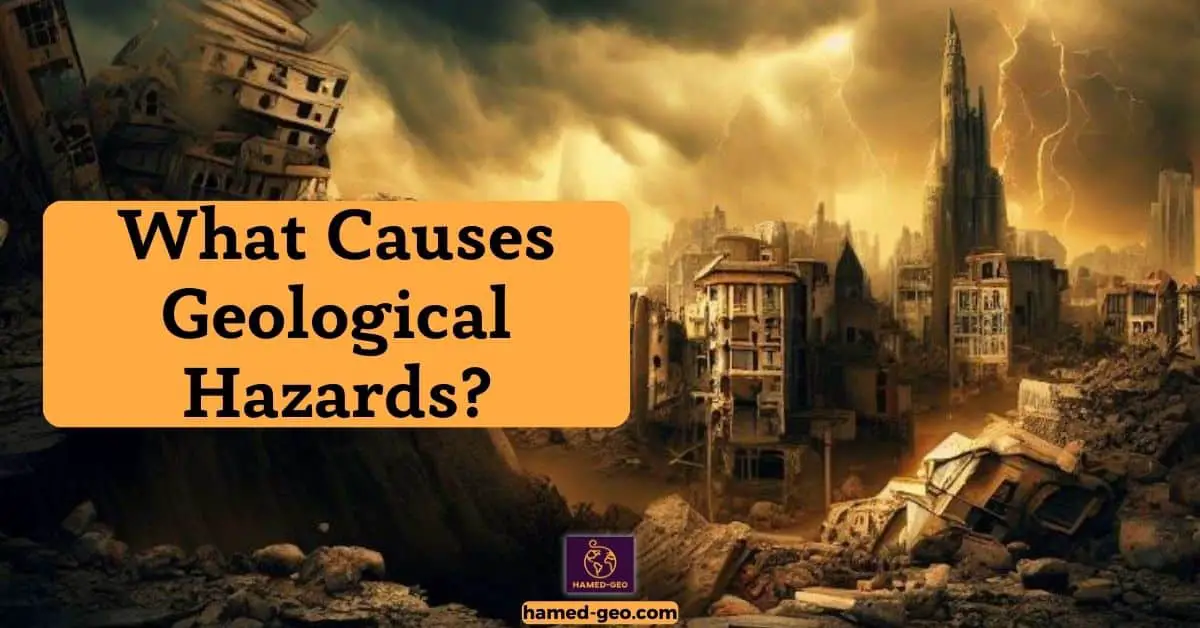
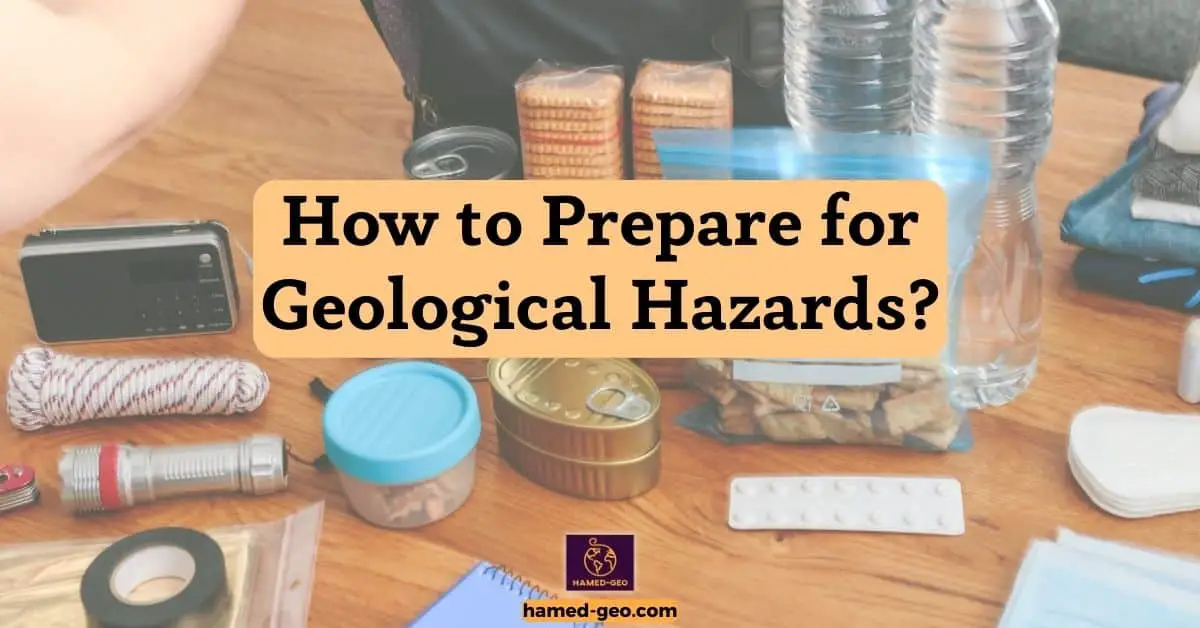
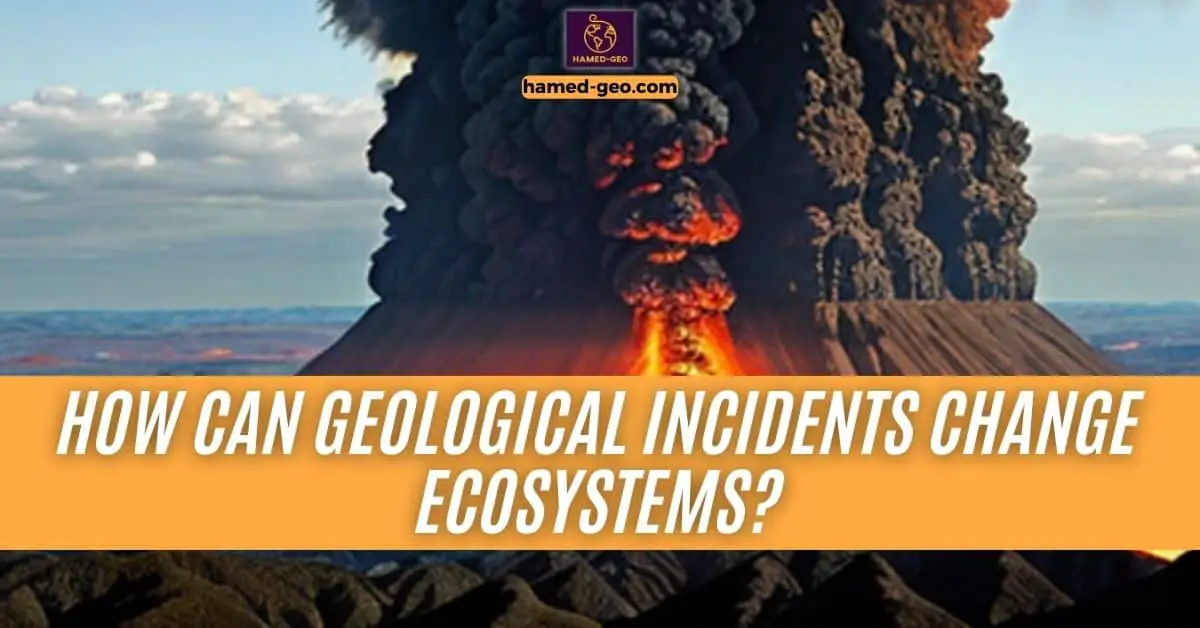
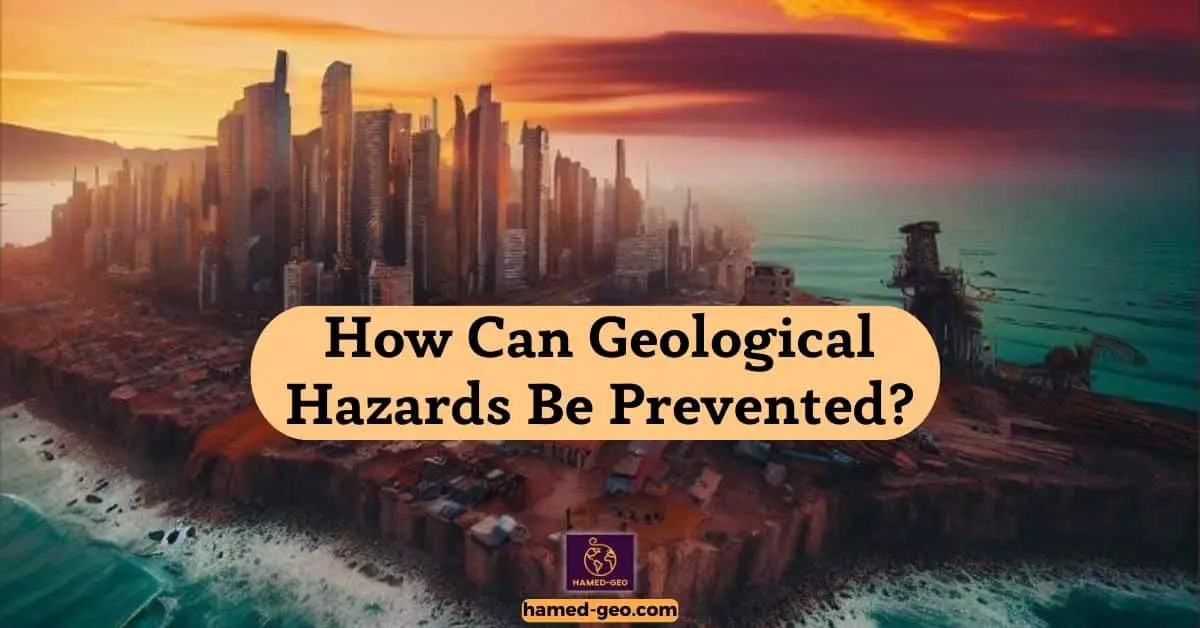
[…] Furthermore, the use of binary cycle power plants greatly reduces the risk of subsidence and other geological hazards associated with geothermal energy […]
[…] your property is crucial to minimize the damage caused by natural hazards. Earthquake bracing is an effective method to secure your home by reinforcing its foundation and […]
[…] Geological engineering is a diverse and interdisciplinary field that encompasses various branches, each focusing on different aspects of the Earth’s geology and its interaction with human activities. These branches aim to apply geological principles and techniques to solve engineering problems and mitigate geological hazards. […]